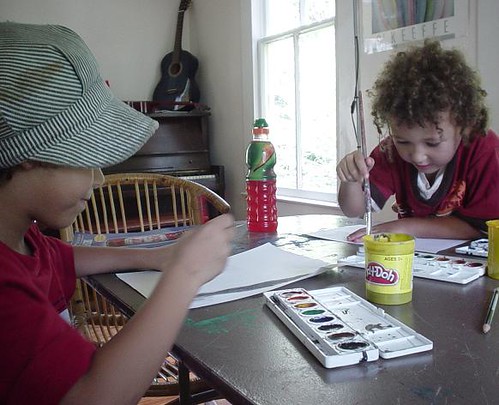
This is a photo of William and Diego painting with watercolors. Later Amanda glanced over at William's painting and exclaimed, "Oh! You made a wheel but it is flat because there is a hole letting the air out!" William beamed at this correct interpretation and I stood there gaping. Sure, I had presumed he was painting a wheel - my adult eyes saw the circle with lines crossing to represent spokes. But my narrowed understanding attributed the trail of paint coming from one point of the circle as totally meaningless, if not just an accident. I was astounded at how these kids have this amazing ability which I unfortunately have lost. They are constantly searching for meaning in their environment and analyzing the world around them. It reminds me of how John Holt describes young children as research scientists in his book, "Learning All the Time":
Children are born passionately eager to make as much sense as they can of things around them. The process by which children turn experience into knowledge is exactly the same, point for point, as the process by which those whom we call scientists make scientific knowledge. Children observe, they wonder, they speculate, and they ask themselves questions. They think up possible answers, they make theories, they hypothesize, and then they test theories by asking questions or by further observations or experiments or reading. Then they modify the theories as needed, or reject them, and the process continues. This is what in “grown-up” life is called the–capital S, capital M–Scientific Method. It is precisely what these little guys start doing as soon as they are born.
If we attempt to control, manipulate, or divert this process, we disturb it. If we continue this long enough, the process stops. The independent scientist in the child disappears.- Ellie, Staff Member




No comments:
Post a Comment